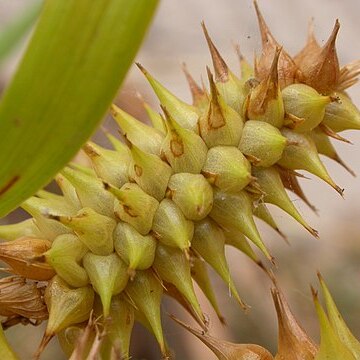Plants cespitose; rhizomes very short or inconspicuous. Culms trigonous in cross section, 10–105 cm, smooth distally. Leaves: basal sheaths dark reddish brown; ligules longer than wide; blades mid to dark green, flat to W-shaped, widest leaves 3–10 mm wide, glabrous. Inflorescences 3–20(–35) cm; proximal bract 19–70(–100) cm, (2.5–)3–9 times longer than inflorescence; proximal (2–)3–6 spikes pistillate, ascending to spreading, at least the distal erect, ca. 20–150-flowered, cylindric; terminal 1(–3) spikes staminate, slightly if at all elevated beyond summit of crowded pistillate spikes. Pistillate scales narrowly ovate, 2.4–4.5 × 1.1–1.8 mm, shorter than perigynia, margins entire, apex acute to acuminate, awnless. Perigynia mostly reflexed at maturity, often green or straw colored, strongly 6–13-veined, veins running into beak, ovate, 6–10 × (1.6–)2.1–3.4 mm, apex abruptly tapered; beak 2.1–4.5 mm, bidentulate, smooth, teeth straight, 0.3–1.1 mm. Stigmas 3. Achenes pale brown, symmetric, not indented, trigonous, smooth.


